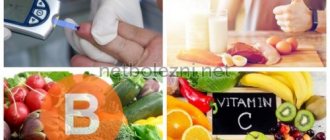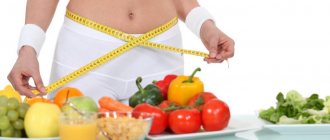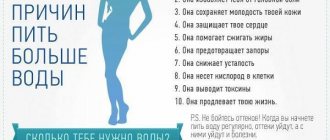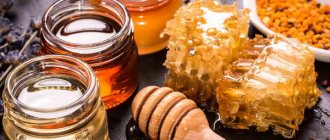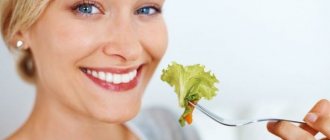This diet is suitable primarily for young mothers who have completed lactation (who constantly buy “baby” products), as well as for mega-busy women who do not have a minute to cook. A diet on baby food will not turn Melissa McCartney into Angelina Jolie - however, losing 2-4 extra pounds (fat, not muscle) will help.
Baby food is not only dry “Baby”...
Don't laugh at the thought of having to drink diluted milk replacer from a bottle for 7 days! The menu for a week of this diet consists of jars of vegetable, meat and fruit purees, as well as children's curds .
These products are satisfying, do not contain sugar (as well as flavoring additives and even salt), and undergo strict quality certification. And most importantly, the puree does not need to be prepared and is convenient to take with you to work or school.
How much will you lose (in theory)…
The author of “baby” nutrition is sure: if you sit on puree for seven days, you can burn up to 5 kg of “pure” fat (some reviews voice more impressive figures - 6, 7 and even 8 kg).
If you combine food, also eating salads and other light, but not baby foods, the result will not be so impressive - up to 3 kg per week.
Important: you can repeat this diet after 3 months - not earlier!
The advantages of such weight loss
- The diet helps not only to lose weight, but also to get rid of toxins that pollute the body.
- Baby purees taste good. If you want to lose weight, but not choke on disgusting celery soup or steamed buckwheat, this is the option for you.
- Food is sold everywhere - in large and small grocery stores, children's shopping centers. Is it possible to buy such food in a pharmacy - yes too!
- The calorie content of each puree (as well as the exact weight of the serving) is indicated on the can. So this diet is also suitable for those who like to count calories.
- No hunger.
- No need to cook. In addition, you can do without the special equipment that lovers of proper nutrition use (for example, steamers).
- However, if you have calculated the cost of the diet and understand that instead of buying canned food, it will be easier to cook your own food, armed with a blender and grater - why not!
Important: the positive qualities of a children's diet are relevant only on the condition that a person does not get too carried away with such nutrition. You can go on a diet for a week, or use it as a one-day fast. But switching to purees for 8 days or more is prohibited.
Disadvantages and dangers
- Dentists are sure: teeth are made to chew every day! To keep your gums healthy and get rid of plaque, you not only need to throw soft pieces of stew or cutlets into your mouth, but also nibble on apples and carrots. And on a diet, food is 100% pureed.
- Therapists also agree with their “dental” colleagues. These doctors assure: the intestines of an adult must constantly fight with coarse fibers and chunky food. Of course, if we do not chew our food thoroughly, our stomach will not like it - but this organ will not approve of constant purees either... Yes, after 7 days on baby food there will be no noticeable harm, but it is better not to stay on such a diet longer.
- Cost: proper nutrition (without sugar and starch) is not cheap.
- Fresh, salt-free puree from vegetables and meat will not seem tasty to everyone.
- According to the diet, the daily calorie intake should not exceed 1200 kcal. These are “minus” calories, because our usual daily caloric intake is 1800 kcal. The body, not receiving a source of energy from nutrition, will be forced to obtain this energy by burning fat reserves... But this process may be accompanied by dizziness and impotence. So if you have a newborn in your arms and there is no help from your grandmother or other relatives, put off losing weight until later - a mother who is weakened by impotence can be dangerous for the baby.
- Diet (as well as other active weight loss) is prohibited during lactation.
Contraindications to sudden weight loss include: anemia, hypertension, gastrointestinal diseases.
If you have a history of gastrointestinal problems or your weight is much higher than normal, before starting a diet you should consult a gastroenterologist, endocrinologist or your doctor.
What does Reese Witherspoon have to do with it...
The author of the diet is Tracy Anderson, Hollywood fitness trainer..
First of all, the trainer developed this diet for herself: after giving birth to a child, the woman gained 20 kilograms, which is a disaster for a person in her profession. The baby’s nutrition helped, and the diet turned out to be so effective that it went “to the masses.”
Later, Tracy's clients included J.Lo, Gwyneth Paltrow, Beyoncé, and Madonna. But the most famous and outspoken lover of the “children’s” diet is actress Reese Witherspoon. From an interview with this actress, most women learned how quickly they lose weight on baby food.
By the way: the “children’s” diet can be called a kind of variation of losing weight on smoothies. But in the case of this diet, there will be both meat and fish on the table (albeit in the form of purees).
Porridge in the diet of children of the first year of life
The ideal food for infants is mother's milk, however, from 4–6 months of age, the child requires additional products, among which grain- and grain-milk-based products—porridge—occupy an important place. They are among the traditional and favorite dishes in our country, which are included in the diet of residents of all ages and regions. The high nutritional value of porridges and their uniqueness as a source of almost all nutrients - proteins, fats, carbohydrates, a number of vitamins and minerals, which distinguishes them favorably from many other classes of products, makes the widespread use of porridges in the diet of children in all age groups justified. Porridges are of particular importance in the nutrition of children in the first year of life, which is largely due to their liquid or viscous consistency, close to the consistency of the evolutionarily programmed food product for infants - human milk, and the high taste of porridges. These products, especially milk porridges, are most convenient as a gradual transition from breast milk to solid food.
Nutritional value of cereals
The nutritional value of porridges is determined, first of all, by the nutritional value of flour or cereals, which are their basis (
). All types of grain products are an important source of carbohydrates, mainly starch, the content of which in various types of flour and cereals is 60–70%. They also include relatively small amounts of plant proteins (7–13%), the biological value of which (especially in the case of semolina and corn cereals) is significantly inferior to the biological value of proteins from animal products (meat, fish, milk, etc.). As for fats, their content varies significantly in different types of flour and cereals: from 0.7% in semolina to 7% in oatmeal.
With a relatively similar composition of basic nutrients, different types of flour and cereals differ significantly in the level of vitamins and mineral salts in them (
). In this regard, buckwheat and oatmeal and flour, which contain the largest amounts of vitamins B1, B2, magnesium, and iron, have an undoubted advantage. The content of dietary fiber in flour and cereals is also very different - it is minimal in semolina and rice cereals and maximum in buckwheat, millet and oatmeal. These differences predetermine differences in the integral nutritional value of grains - it is highest in buckwheat and oat flour, which contain protein with the highest biological value among all grains and the largest amounts of fat, a number of vitamins and mineral salts. At the same time, the nutritional value of semolina, traditional for our country, should be recognized as significantly lower - it contains small (compared to other cereals) amounts of fats, vitamins and mineral salts.
Moving on to the nutritional value of the cereals themselves, it should be noted that the nutritional value of dairy-free cereals corresponds to the given characteristics of the grains included in their composition. At the same time, the nutritional value of milk porridges is significantly increased due to milk - an important source of high-quality protein, fat, calcium, vitamins A, B2, etc. Milk porridges can therefore serve as an important source of protein for a child, including animal fat, carbohydrates and energy, a number of vitamins and mineral salts. This is precisely what explains the need to use milk porridges in the form of one of the main types of complementary foods needed for children at 5–6 months to provide the child with additional (in relation to human milk or its substitutes) amount of protein and energy, which he begins to need. age due to intensive growth and increased motor activity, as well as additional amounts of mineral salts and vitamins.
Optimal age for introducing cereals into the diet of children in the first year of life
It should be emphasized that milk porridges are most convenient as a transition from human milk to another diet, since they are close to milk both in consistency and organoleptic properties. At the same time, the early introduction of cereals into a child’s diet, associated with the intake of significant amounts of carbohydrates and energy into the child’s body, can have pro-allergenic effects and contribute to the development of overweight in children. In addition, when porridges are first introduced into children's diets, and then vegetable purees, children are often reluctant to eat tasteless (compared to sweet porridges) vegetable purees. In this regard, it seems more appropriate to introduce vegetable purees into the child’s diet first, and only then milk porridge. At the same time, if the child is not growing well (and the doctor associates this with the child’s insufficient nutrition), as well as if there is a tendency towards unstable stools (which can be strengthened by introducing vegetable puree into the diet), you can first introduce milk porridge into the diet and only then - vegetable puree. Most recently, we have proposed a third option for starting complementary feeding - introducing dairy-free, gluten-free (sugar-free) porridge as the first course of complementary feeding.
What age should be considered optimal for introducing cereals? Based on the data considered, and also taking into account that the main enzymes of the gastrointestinal tract of infants involved in the digestion of proteins, fats and carbohydrates of porridges “ripe” no earlier than 3–4 months of life, we can conclude that it is advisable to introduce porridges into the diet no earlier than 4–5 months of life. Studies conducted in our department show that earlier introduction of cereals into the diet is accompanied by a high incidence of allergic reactions and gastrointestinal disorders. Based on this, the scheme currently in force in the Russian Federation for introducing complementary feeding products and dishes into children’s diets provides for the introduction of porridges into the diets of children aged 5–6 months. In cases where porridge is the first course of complementary feeding, it can be introduced a little earlier - from 4.5–5 months of life. At the same time, to decide which porridge to start complementary feeding with, one should take into account not only data on their nutritional value, but also the critically important question of the presence or absence of gluten (gliadin) in the porridge - one of the grain proteins, the early intake of which into a child's body can induce the occurrence of celiac disease or a celiac-like syndrome. Gluten is part of semolina, oat and wheat flour. At the same time, it is absent in rice, buckwheat and corn flour. That is why, as the first grain complementary food, you should use: rice or buckwheat milk porridge, and later corn milk porridge, and only then porridges containing gluten - semolina and oatmeal. In this regard, it is necessary to point out the need for active work of health workers with the population to explain the noted properties of semolina porridge, which is still traditionally widely used in many regions of Russia, and the inappropriateness of its early introduction into the diet of infants.
The given data on the level of dietary fiber in various porridges is also an important criterion for the individual prescription of porridges - children with a tendency to constipation need increased consumption of dietary fiber, and it is advisable to introduce, first of all, buckwheat and corn porridge into their diet, avoiding rice, and after 5–6 months - oatmeal. On the contrary, children with unstable stools should use rice porridge more widely in their diet, limiting the consumption of oatmeal and buckwheat porridge.
It should be especially emphasized that although the nutritional value of dairy-free porridges is significantly lower than milk porridges, children with food allergies to cow's milk proteins, as well as with lactase deficiency and other forms of malabsorption, need dairy-free porridges that provide the opportunity to introduce cereal complementary foods into the diet and such children.
Types of cereals used in children of the first year of life
Currently, commercially produced porridges are actively used in the nutrition of young children. Before moving on to their consideration, it should be pointed out that the main advantages of industrially produced baby food products in comparison with home-cooked dishes are:
- guaranteed chemical and microbiological safety;
- stable chemical composition corresponding to age-related characteristics of metabolism and digestion;
- optimal and guaranteed degree of grinding, corresponding to the age characteristics of the chewing apparatus and digestive system of children;
- high quality and safety of raw materials used for the production of complementary feeding products and dishes;
- a wide range of raw materials used in the production of complementary feeding products, including those that are inaccessible at home (such as exotic tropical fruits, hard-to-cook cereals - corn, rye, millet, barley and mixtures of several cereals, etc.).
Commercially produced baby food porridges are obtained from specially selected raw materials intended for the production of baby food products and are subject to careful hygienic control before leaving the enterprise.
Currently, there is a wide range of commercially produced cereals for children of the first year of life. Summarized data on their main types are given in table. 3.
All these types of cereals, both dairy and non-dairy, are currently widely represented on the Russian market. At the same time, the most common are instant-cooked porridges: to obtain a finished dish from such mixtures, it is enough to add warm, pre-boiled water to the dry powder and mix thoroughly. Instant porridges, both dairy and non-dairy, are usually enriched with essential vitamins (A, E, C, B1, B2, B6, B12, PP, etc.), as well as, in many cases, calcium, iron and iodine, which is one of the most important ways to prevent deficiency of these micronutrients, which is very common in Russia in children older than 6 months. The enrichment of porridges is carried out taking into account the age needs of children. The amount of each vitamin and mineral is usually no less than 20% and no more than 50% of the child’s daily needs.
Porridges can be made from one or two types of cereals (for example, “Milk buckwheat porridge” Nutricia, “Oatmeal porridge with peach milk”, Humana), and from 5–8 types of grains, for example, “Porridge 5 grains” (Nestlé ), “Porridge 5 grains” (“Vinny”, CJSC “Zauralya Products”), “Cereal porridge” (“Baby Sitter” Noki Infant Products LTD), “Multi-cereal” (“Malyshka” Nutricia), etc., including one of those cereals that cannot be used at home due to poor digestibility (in particular, barley (“Barley porridge” Beach Nut), rye (“Oatmeal-rye Welling” Samper), corn (“Corn porridge with fruit” Top-Top, Nutricia) etc.). A special technology for processing cereals makes it possible to use millet cereals in baby food (milk porridge “Millet with Apple” Dania).
Some of both dairy and dairy-free porridges contain vegetable oils (sunflower, corn, etc.), which enrich the porridge with polyunsaturated fatty acids (PUFAs), necessary for the proper growth and development of children, for example, milk porridge “Tasty rice porridge. Dried apricots, prunes" (Heinz/Georgievsk). Many types of porridges are additionally enriched with dry fruit powders (apples, plums, bananas, berries, etc.), for example, “Oatmeal-corn with apple and banana” (“Theme” Unimilk), “Apple porridge” (Humana), “Wheat- oatmeal with fruit" (Nestlé), "Multi-grain porridge with pear, apple and raspberry" (Semper) and/or vegetables ("Rice milk porridge with pumpkin and apricot" (FrutoNyanya), "Dairy-free oatmeal porridge with zucchini and broccoli" ( Nestlé) etc.), as well as with the addition of nuts (“Hazelnuts” (Baby), etc.), honey (“Medolino” (Podravka)), cocoa (“Wheat flakes with chocolate and nuts” (Kolinska)), yogurt (“Milk porridge with strawberry-yogurt puree” (Humana), “Four milk porridge with fruit” (Dania), etc.), natural flavors and vanillin, etc. For children 8–11 months old, specialized porridges such as muesli are also produced, which contain nuts, dried fruits, grains, cereal flakes, which helps teach a child to chew (for example, “Muesli-fruit” (“Baby”, Kolinska), etc.). These additives significantly improve the taste of cereals and make them more attractive to children. However, each of these additional components is a risk factor for food intolerance. That is why porridges containing dry citrus powders and honey are recommended no earlier than 6 months, and porridges with cocoa and chocolate no earlier than 9 months.
Some manufacturers currently use infant milk formulas as a milk base for preparing children's instant milk porridge, for example, “Corn with Fruit” (Nutritsia), “Rice Milk Porridge” (HiPP), “Frisocrem. Rice and corn porridge based on infant formula" (Friesland Foods), etc.
Along with porridges for feeding healthy children, there are also specialized medicinal porridges for children with intolerance to cow’s and goat’s milk proteins, for example, “Humana GA porridge” (a hypoallergenic porridge based on hydrolyzed whey proteins) and “Humana SL porridge” (based on soy protein isolate ), do not contain lactose.
Of significant interest are recently created products - dry instant porridges enriched with prebiotics, which use inulin and low molecular weight fructooligosaccharides (“Low allergenic rice porridge with prebiotics” and “First oat porridge with prebiotics” (Heinz), “Low allergenic corn porridge enriched with prebiotics” ( "Baby", Kolinska), etc.). For children with unstable stool or intestinal dysfunction, instant porridges with probiotics are recommended (“8 cereals with bifidobacteria” “Pomogayka” (Nestlé), etc.) and with pro- and prebiotics (“Pomogayka” porridge “Happy Dreams” 5 cereals with linden blossom (Nestlé, etc.).
In addition to porridges, so-called instant cookies are produced in our country and abroad, which are very close in their properties to porridges (for example, Malyshok cookies (OJSC Minusinsky Food Plant), Children's cookies (Heinz), Biscottini cookies "(Nestlé), etc.). Such cookies easily dissolve in water or milk, turning into practically porridge that can be given to babies.
For children 8–11 months old, specialized cereals such as “muesli” are also produced, which contain nuts, dried fruits, grains, cereal flakes, which helps teach the child to chew (for example, “Muesli-fruit” (“Baby”, Kolinska), etc. ).
Recently, “ready-made porridges” are also used in the nutrition of children of the first year of life - original canned products that combine ingredients from three groups of products - milk, cereals and fruits (dairy) or from two groups - cereals and fruits (dairy-free), for example “Buckwheat porridge with apple” (FrutoNyanya), fruit porridge “Tema Tip-Top” apple-peach with oatmeal (Unimilk), etc. As a result, the nutritional value of the products is increased due to the mutual addition of nutrients from milk and cereals with nutrients from fruits. These products are packaged in glass jars or Tetra-Pak bags and then sterilized. They only require heating before use.
It should be emphasized once again that the child’s first porridge should be made from one grain and not contain additives such as honey, nuts, cocoa, or dry fruit powders. Porridges made from many grains and porridges with various additives can be used in children from 6–8 months of age.
When preparing and using industrially produced cereals, you must strictly follow all the rules indicated on the label. In particular, mixtures should not be diluted “approximately” or “by eye”. Porridge is usually dosed with spoons (table spoons, tea spoons). Some companies include measuring spoons in the box. The approximate content of powder in one tablespoon varies for different porridges from 3.5 to 10 g; to prepare 100 g of finished porridge you need from 10 to 30 g of dry product.
“Dairy-free” porridges are diluted with water, juice or milk, and dairy porridges are diluted with water, and after reconstitution with water, there is no need to add either sugar or butter. Only for special indications, children with decreased appetite and difficulty gaining weight can add 2–3 g of butter or vegetable oil per 1 serving of porridge to improve the taste and increase the nutritional and energy value of the product.
Literature
- Nutrition of a healthy and sick child / Manual for doctors. Edited by V. A. Tutelyan, I. Ya. Kon, B. S. Kaganov. Moscow, 2007, pp. 32–37.
- Horse I. Ya. Porridge in the nutrition of children of the first year of life // Children's Doctor, 1999, ‡‚ 2, pp. 70–74.
- Kon I. Ya. Nutrition of children in the first year of life: modern concepts // Pediatrics, 2006, No. 1, pp. 63–71.
- Kon I. Ya., Bulatova E. M., Abramova T. V., Kurkova V. I. Porridge in the nutrition of young children / Manual for pediatricians, Moscow, St. Petersburg, 2006.
- Sanitary and epidemiological rules and regulations (SanPiN 2.3.2.1940 - 05) “Organization of baby food.” Moscow, 2005.
- Skvortsova V. A., Borovik T. E., Ladodo K. S. et al. Modern industrial cereals in the nutrition of young children // Issues of modern pediatrics, 2004, volume 3, no. 1, pp. 61–64.
- Sorvacheva T.N., Kurkova V.I., Safronova A.I., Kon I.Ya. Rationale for the optimal timing of introducing cereal complementary feeding products into the diet of healthy children of the 1st year of life // Russian Pediatric Journal, 1998, No. 6, pp. 61–63.
I. Ya. Kon , Doctor of Medical Sciences, Professor, Academician of the Russian Academy of Natural Sciences T. V. Abramova , Candidate of Medical Sciences V. I. Kurkova N. N. Pustograev , Candidate of Medical Sciences Research Institute of Nutrition of the Russian Academy of Medical Sciences , Moscow
Weight loss diet
You can buy...
For maximum weight loss, the following are suitable:
- only baby purees (meat, fish, chicken, vegetables, fruit), as well as cottage cheese and kefir;
- baby porridge - the kind that is steamed with boiling water (this product can be consumed for breakfast or lunch, preparing a portion of 150 g for yourself);
- fiber (the nutrient should be added a spoonful to each serving of vegetable puree - fiber will make the intestines work better, helping you avoid the complications of such a diet);
- cabbage, green apples as a snack (these products should not be chopped - eat them at least every other day “in their pure form” to prevent constipation and other intestinal problems);
- lean meat, eggs (no more than one per day), low-fat cottage cheese, unsweetened fruits, vegetables or legumes (you can cook some of these products for yourself once a day, counting calories if you can’t force yourself to eat another puree).
Important: read the ingredients! Avoid foods containing flour, starch, and sugar. Manufacturers of cheap purees sometimes “sin” with such additives.
Calculation in the store: one jar - one meal. That is, 4-5 jars are needed every day.
If you are not going to limit yourself exclusively to purees, you can fill the refrigerator with fruits and light vegetables, meat, and lean fish. This way the week will go easier. But in this case you will lose less.
Forget for now...
About all the “adult” food!
Combinations of dishes in the “meat + side dish” style are also prohibited (meat purees should not be supplemented with porridge or pasta).
Sample weekly menu
- Breakfast : 100 g of grated cottage cheese (fermented milk, not sweet and not glazed). A serving can be flavored with fresh or frozen berries, but not with jam. On other days, buy baby kefir, unsweetened yogurt, and fruit-flavored curds (without sugar).
- First snack : 100 g of any fruit puree. You can buy food that contains cream and cottage cheese.
- Lunch : meat or fish puree, one large jar (200 g). Add one baby cookie for dessert.
- Afternoon snack (second snack) : 100 g of vegetable puree.
- Dinner : main course - vegetable puree, dessert - cottage cheese.
- Second dinner : baby juice (without sugar) or unsweetened tea. It is also advisable to prepare the last drink from the children's series, buying herbal tea in bags or instant, in granules - such tea will not interfere with sleep.
You also need to take a vitamin-mineral complex every day. Yes, baby purees are often additionally fortified, but their portions are designed for the bodies of children, and this amount of beneficial nutrients will not be enough for an adult.
As with any other diet, you should also adhere to the water regime on baby food. Drink 1.5 liters of pure water (without gas or sugar) per day. If you are tall, have impressive weight, or have a strong build, the amount of water should be greater.
The list of foods that you should avoid eating includes:
- citrus fruit;
- alcoholic drinks;
- nuts;
- fatty meat, poultry, smoked meats;
- chicken;
- honey;
- fish and any dishes made from it;
- butter dough;
- pineapples;
- melon;
- strawberries, strawberries;
- apricots, peaches;
- chocolate and other products containing cocoa (pastes, candies);
- cow's milk;
- coffee;
- eggs;
- mushrooms;
- mayonnaise, mustard, ketchup, vinegar, spices;
- radish, radish, horseradish.
Modern allergology suggests not giving up all foods (according to the Ado diet), but only those that definitely cause a reaction. a food diary will help you deal with this issue .
Reviews: both “yes” and “no”
Reviews and results of such nutrition are mostly positive. Of course, if the weight wasn’t initially off the charts, the before and after photos may not impress - well, your waist has tightened up a little, big deal! However, those who are losing weight, seeing the numbers on their home scales, praise the diet, giving it 4.5 out of 5 possible stars (and this is more than they give to Japanese, French, buckwheat and other strict diets).
Successful weight loss and life hacks
- If life without sweets seems unacceptable even for a week, buy dark chocolate (80%). You can allow yourself 2-3 cubes per day.
- Also, if you want something sweet, choose peach puree - it is sugar-free, but it will satisfy your need for sweets 100%.
- You should not get carried away with tea, juice and other drinks (except water). The basic daily food already comes in the form of purees, so there is no need for additional dilution.
- Young mothers (not lactating) can prepare food for themselves and their baby using a blender.
Something went wrong…
The pros and cons of any diet are often a purely personal matter. Therefore, what some women scold may not alarm you personally at all (and vice versa).
However, dissatisfied losers noted:
- even despite the use of fiber, constipation can be annoying (flaxseed oil helps - you should drink a large spoon every morning on an empty stomach in the morning);
- after leaving the diet, you need to hold back for 2-3 weeks, adhering to exclusively healthy eating (nothing fried, fatty, sweet), otherwise the weight will quickly return;
- some women on this diet begin to experience abdominal pain (in this case, sour fruits should be replaced with “softer” mashed potatoes and bananas);
- unsalted food for a week means fluid leaves the body (which means that after the diet, some of the fluid will return, and with it 1-2 kg of weight).
First-person experience: this video blogger personally went on a “children’s” diet. And here are the girl’s conclusions:
Gluten and sugar free diet - what you can eat and what you can't.
Top 7 best drugs for weight loss
| Name | Price |
| Black Latte for weight loss | 99 rub. |
| NATURAL Fit Calorie Blocker Powder | 990 rub. |
| Purple tea "Chang-Shu" | 499 rub. |
| Fat burning drops “Honey Spas” | 1980 rub. 99 rub. (until 08/24/2021) |
| Detox cocktail for weight loss | 147 rub. |
| Lipocarnit for weight loss | 990 rub. |
| Reduslim weight loss product | 149 rub. |
Views: 1,696
